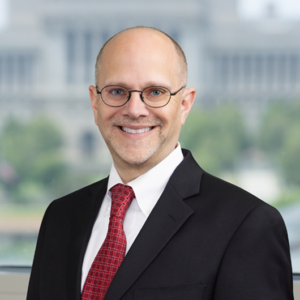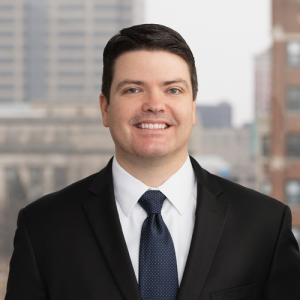On Friday, September 11, 2020, the U.S. Department of Labor (“DOL”) announced revisions to its initial Rule implementing the Emergency Paid Sick Leave Act (“EPSLA”) and the Emergency Family and Medical Leave Expansion Act (“EFMLEA”) under the Families First Coronavirus Response Act (“FFCRA”). The “Revised Rule” goes into effect on Wednesday, September 16, 2020. The revisions are particularly significant for health care employers, as the revisions narrow the definition of a “health care provider” for purposes of exclusion from the EPSLA and EFMLEA, which will expand the application of EPSLA and EFMLEA to many more health care employers.
History of the FFCRA Rule and New York’s Challenge to the Rule: Significant Change for Health Care Employers
On March 18, 2020, President Trump signed the FFCRA into law. Among other things, the new law created the EFMLEA and EPSLA, each of which creates excused time off and paid leave for certain employees dealing with COVID-19. Just as the FFCRA went into effect on April 1, 2020, the DOL issued its “Temporary Rule: Paid Leave under the Families First Coronavirus Response Act” (the “Initial Rule”). As we previously discussed here, the Initial Rule provided both clarification and new information regarding the implementation of the FFCRA.
As described in a recent blog post, the State of New York challenged the DOL’s Initial Rule under the Administrative Procedure Act, arguing that it unlawfully narrowed workers’ eligibility for emergency family leave and paid sick leave. On August 3, 2020, the U.S. District Court for the Southern District of New York struck down certain portions of the DOL’s Initial Rule, including, but not limited to, the DOL’s definition of “health care provider” for purposes of who an employer may elect to exclude from leave benefits.
The DOL noted in its press release on Friday, September 11, that the Revised Rule was issued in light of the U.S. District Court for the Southern District of New York’s decision.
The Revised Rule
In the Revised Rule, the DOL makes several changes that have a significant impact on employers:
1. Revisions to the Definition of Health Care Provider
The FFCRA provides that employers of health care providers and emergency responders may exclude such employees from the EFMLEA and the EPSLA. The Initial Rule’s definition of “health care provider” was originally very broad and encompassed anyone employed at a health care employer (or entities that contract with a health care provider to provide services or to maintain the operation of the facility) or employed by an entity that provides medical services, produces medical products or is involved in making COVID-19 related equipment, tests, drugs, vaccines, diagnostic vehicles or treatments.
The Revised Rule significantly narrows the definition of “health care provider” and, as a result, employees who do not fall under this new definition will not be exempted from the EPSLA and the EFMLEA. The Revised Rule confirms that working at a health care facility does not necessarily mean that an employee is a “health care provider,” and the revised definition of a “health care provider” is now as follows:
-
- A “health care provider” as defined by the FMLA’s regulations at 29 C.F.R. § 825.102 and 29 C.F.R. § 825.125. This is a fairly limited definition that generally includes doctors (M.D.s and D.O.s), podiatrists, dentists, clinical psychologists, optometrists, chiropractors, nurse practitioners, nurse-midwives, clinical social workers, physician assistants, certain Christian Science Practitioners and other limited health care providers.; OR
- Any other employee of a covered employer who is capable of providing health care services, “meaning he or she is employed to provide diagnostic services, preventive services, treatment services or other services that are integrated with and necessary to the provision of patient care and, if not provided, would adversely impact patient care.”
If an employee does not fall under this definition above, then s/he will be eligible to take leave under the FFCRA. While it is more clear who falls under Category A above, it is less clear who might fall under Category B.
The Revised Rule provides important guidance to assist employers in understanding Category B. First, it provides the following examples of the types of employees who would be covered by the definition of a “health care provider:” nurses, nurse assistants, medical technicians and any other persons who directly provide diagnostic services, preventive services, treatment services or other services that are integrated with and necessary to the provision of patient care, as well as employees providing such services under the supervision, order or direction of, or providing direct assistance to an individual that meets the definition of a “health care provider.”
The Revised Rule also clarifies that the definition of “health care provider” includes employees who are otherwise integrated into and necessary to the provision of health care services, such as laboratory technicians who process test results necessary to diagnoses and treatment.
As for what would qualify as either “diagnostic services,” “preventative services,” “treatment services” or “services integrated with and necessary to such services that if not provided would adversely impact patient care,” the Rule lists the following examples:
Diagnostic Services: Taking or processing samples; performing or assisting in the performance of x-rays or other diagnostic tests or procedures; and interpreting test or procedure results.
Preventative Services: Screenings; check-ups; and counseling to prevent illness, disease or other health problems.
Treatment Services: Performing surgery or other invasive or physical interventions; prescribing medication; providing or administering prescribed medication; physical therapy; and providing or assisting in breathing treatments.
Integrated Services: Bathing; dressing; hand feeding; taking vital signs; setting up medical equipment for procedures; and transporting patients and samples.
Employees who do not provide health care services such as these described above do not meet the new definition of a “health care provider,” even if their services could affect the provision of health care services. The Revised Rule provides examples of health care employees that would not meet the definition of a “health care provider.” Such employees include but are not necessarily limited to: IT professionals, building maintenance staff, human resources personnel, cooks, food services workers, records managers, consultants and billers. The DOL explained in the Revised Rule’s preamble that, “while services provided by these individuals may be related to patient care . . . they are too attenuated to be integrated and necessary components of patient care.”
The Revised Rule also provides examples of the “typical work location” where “health care providers” may work. The list, which is not exhaustive, includes a doctor’s office, hospital, health care center, clinic, medical school, local health department or agency, nursing facility, retirement facility, nursing home, home health care provider, any facility that performs laboratory or medical testing, pharmacy or any similar permanent or temporary institution, facility, location or site where medical services are provided. As stated in the Revised Rule, an employee does not need to work at one of these facilities to be a “health care provider,” and working at one of these facilities does not necessarily mean an employee is a “health care provider” for purposes of the FFCRA.
Practical Takeaways:
-
- Recall the FFCRA covers employees of private employers with fewer than 500 employees and employees of most covered public sector employers.[1]
- This change is significant for employers who may be covered by the FFCRA but excluded some or all of their employees from eligibility under the previous broad definition of “health care provider.”
- Given the Revised Rule narrows the definition of “health care provider,” employers of health care workers who excluded employees from eligibility in reliance on the old definition of “health care providers” will need to review the list of employees to determine who falls under the new definition of “health care provider” and who does not.
- If the employer determines that it has excluded employees who no longer meet the definition of “health care provider,” the employer should adopt (or update) policies and procedures to ensure compliance with the FFCRA.
2. Revisions to Timing of Notice
Previously, the Initial Rule required that employees submit to their employer certain documentation (indicating, for instance, their reason for leave, the duration of the requested leave, etc.) prior to taking leave under the FFCRA. However, the Revised Rule modifies this requirement and clarifies that for purposes of the EPSLA, notice may not be required in advance and may only be required after the first workday (or portion thereof) for which an employee takes leave. After the first workday, it will be reasonable for an employer to require notice as soon as practicable under the facts and circumstances of the particular case. Notice for taking leave under the EFMLEA is required as soon as practicable under the revised Rule, but the DOL notes that if the reason for EFMLEA leave is foreseeable, it will generally be practicable to provide notice prior to the need to take leave.
Practical Takeaway:
-
- Given the Revised Rule, employers should update the timing of notice provisions in their policies and procedures to ensure compliance.
3. Clarification and Reaffirmation of Work Availability Requirement
As background, both the EPSLA and the EFMLEA grant paid leave to employees who are “unable to work (or telework) due to a need for leave” specified in the FFCRA. The Initial Rule included language indicating that employees whose employers do not have work for them are not eligible for paid leave under the FFCRA. Although the Southern District of New York vacated this portion of the Initial Rule, the DOL doubled-down on their initial interpretation and reaffirmed that FFCRA leave may be taken only if the employee has work from which to take leave and that this rule applies to all qualifying reasons to take leave under the FFCRA. Additional detail is provided in the Revised Rule to make this work availability requirement more clear.
Practical Takeaway:
-
- Given the Revised Rule, employers should review provisions in their policies and procedures to ensure compliance.
4. Use of Intermittent Leave
Finally, the DOL addressed the Southern District of New York’s concerns about the use of intermittent leave. Specifically, while the court upheld the portions of the Initial Rule that bar intermittent leave for certain qualifying conditions that implicate an employee’s risk of viral transmission, the court vacated the portions of the Initial Rule requiring an employee to obtain employer consent in order to use intermittent leave for the remaining qualifying conditions that do not implicate the same public health considerations. Despite the court’s position on use of intermittent leave, the DOL again doubled-down on their initial interpretation and reaffirmed in the Preamble to the Revised Rule that an employee must obtain his or her employer’s approval to take EPSLA or EFMLEA intermittently. However, the DOL also clarified in the Preamble that this employer-approval condition would not apply to employees who take FFCRA leave in full-day increments to care for their children whose schools are operating on an alternate day (or other hybrid-attendance) basis because the DOL does not view such leave as “intermittent.” Rather, the DOL explains that in an alternate day or other hybrid-attendance schedule implemented due to COVID-19, the school is physically closed with respect to certain students on particular days as determined and directed by the school, not the employee, and “[f]or the purposes of the FFCRA, each day of school closure constitutes a separate reason for FFCRA leave that ends when the school opens the next day.” As such, under the FFCRA, intermittent leave is not needed in that situation because each day that the school is closed is its own separate qualifying reason for leave under the FFCRA. The DOL also explained in the Preamble that the same reasoning applies to longer and shorter alternating schedules, “such as where the employee’s child attends in-person classes for half of each school day or where the employee’s child attends in-person classes every other week and the employee takes FFCRA leave to care for the child during the half-days or weeks in which the child does not attend classes in person.”
Practical Takeaway:
-
- Given the Revised Rule, employers should review provisions in their policies and procedures to ensure compliance.
Employer Tax Credits – Potential Issues for Governmental Hospitals
The Revised Rule does not modify the corresponding social security payroll tax credits that are available to certain eligible employers covered by the FFCRA, as summarized in an earlier blog post. However, there is an apparent disconnect between those employers who are subject to EPSLA and EFMLEA and those employers who can claim the tax credits. The FFCRA provides that businesses and tax-exempt organizations that have fewer than 500 employees, as well as public sector employers regardless of the number of employees, are required to comply with EPSLA and EFMLEA. Meanwhile, the FFCRA specifically excludes such public sector employers (e.g., governmental hospitals) from eligibility for the corresponding tax credits meant to offset the costs of providing such paid leave. While it is possible that this issue affecting public sector employers could be addressed by Congress in the future, no such action appears imminent at this time.
Next Steps for Health Care Employers
These revisions in the Revised Rule are significant, particularly for health care employers that previously relied on the broad definition of “health care provider” to exempt its employees from leave under the FFCRA. Health care employers should carefully review their positions to determine who may now be eligible for leave under the FFCRA and immediately become knowledgeable of the leave rights and its obligations under the FFCRA.
We Can Help
Hall Render is updating its FFCRA Toolkit in order to provide clients immediate and substantive assistance to come into compliance with the requirements of the Revised Rule. You may visit the Hall Render Toolkit page to learn more about the FFCRA Toolkit and order one for your organization.
If you have any questions or require any assistance as you consider how the FFCRA and these developments may impact your organization and its obligations, please do not hesitate to contact:
- Kevin Stella at (317) 977-1426 or kstella@wp.hallrender.com;
- Robin Sheridan at (414) 721-0469 or rsheridan@wp.hallrender.com;
- Jon Rabin at (248) 457-7835 or jrabin@wp.hallrender.com;
- Calvin Chambers at (317) 977-1459 or cchambers@wp.hallrender.com;
- Mary Kate Liffrig at (720) 282-2033 or mliffrig@wp.hallrender.com; or
- Your regular Hall Render attorney.
Hall Render blog posts and articles are intended for informational purposes only. For ethical reasons, Hall Render attorneys cannot—outside of an attorney-client relationship—answer specific questions that would be legal advice.





